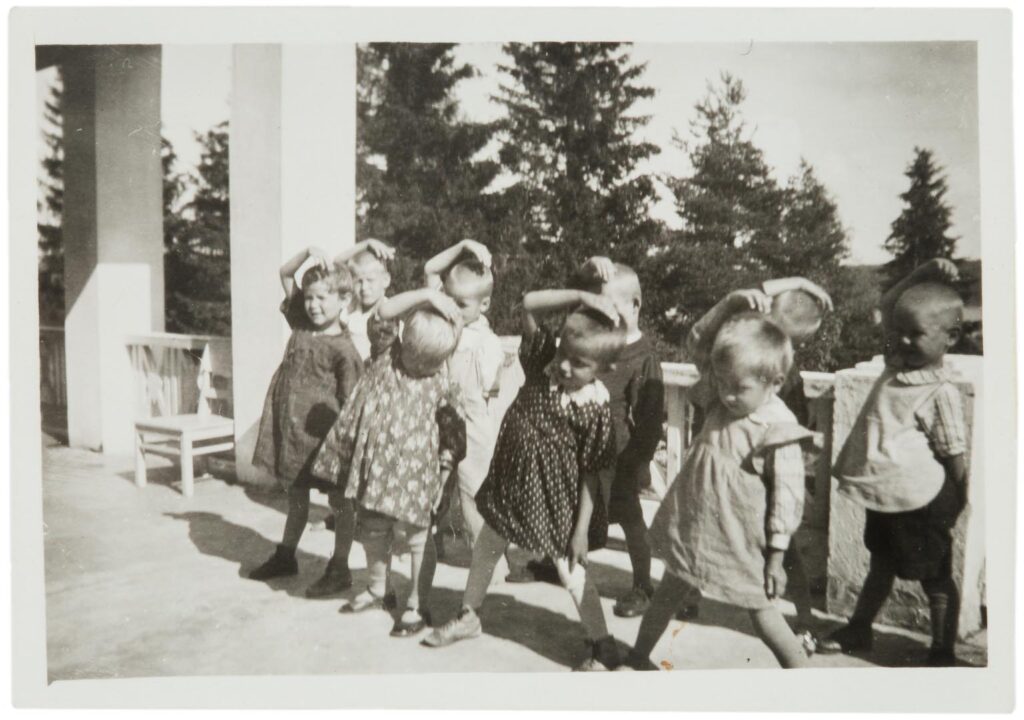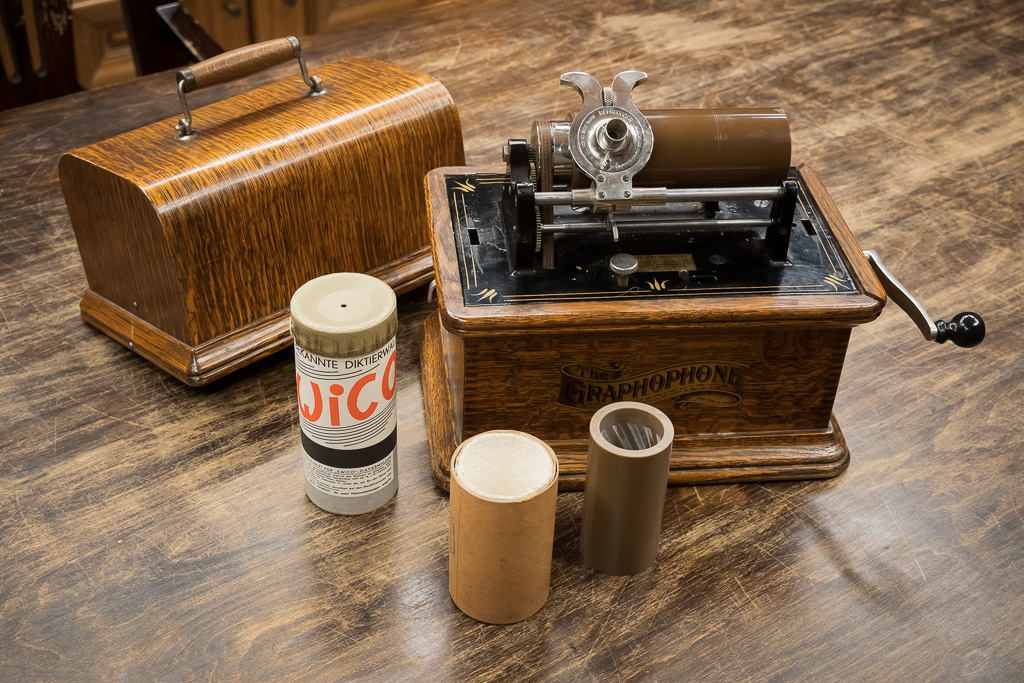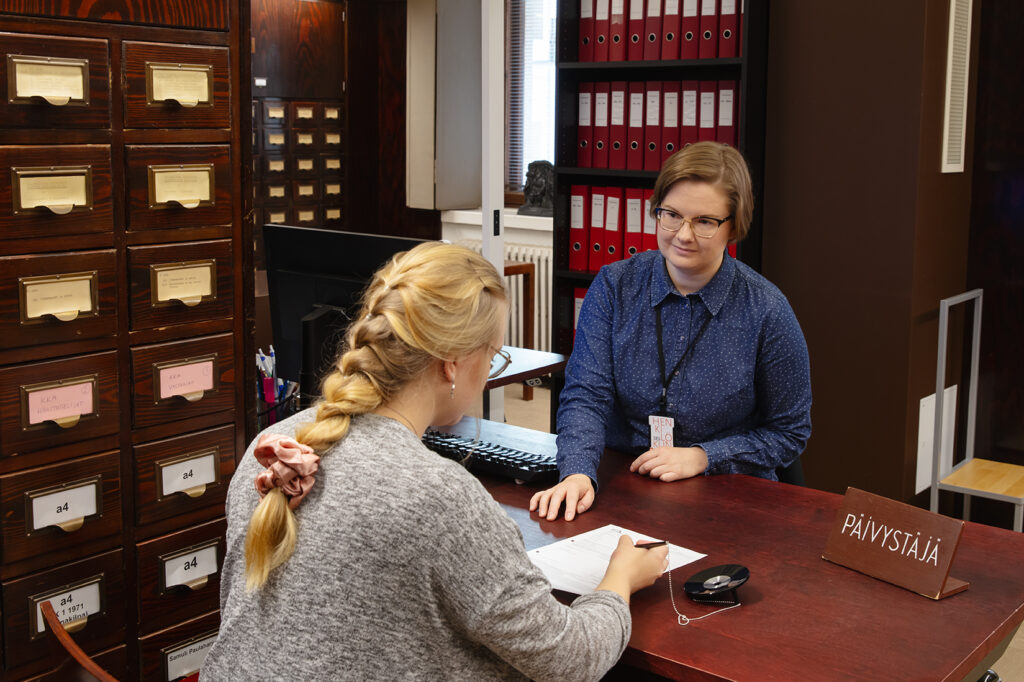Archive materials on Traditional and Contemporary Culture
Our collections include oral tradition, folk music, ethnological descriptions, biographies and oral history narratives as texts, images and sounds. Collection development policy relies on the responses to the questionnaires and contributions of individual collectors.
The oldest part of the collection can largely be attributed to Elias Lönnrot, the compiler of the Finnish national epic Kalevala, and his contemporaries’ collections from the 1830s. The Kalevala Jubilee Folklore Collection Contest of 1935–36 established the questionnaire basis of the collection. The collection of sound recordings consists primarily of oral history. In geographical terms, the cultural information is primarily from Finland and Karelia.
The collections are mostly the work of individual collectors. The majority of the material is acquired through Folklore and oral history questionnaires. The Archives maintains a network of four hundred people of different ages from different social groups and parts of Finland. During its history, the Archives has received material from several tens of thousands of people.
Folklore and oral history questionnaires are catalogued in several ways. The main card index and the SKS Archives database can reference most of the collections. In order to facilitate a more accurate search, you may utilize manual catalogues, directories and databases. Furthermore, the online resources are linked to entire digital texts and catalogues.
Finnish Literature Society’s Folklore index cards
Since 1831, the collection and preservation of oral folk poetry have been one of the functions of the Finnish Literature Society (SKS). As a result of this work, the society has amassed extensive collections of folklore. The most prominent part of these collections is the pinewood cabinets of folklore index cards, which give the interior of SKS’s archives its unique atmosphere. The Finnish Literature Society’s folklore index card cabinet contains approximately three million cards organized by genre, subject, geographical origin, and collector of the item of folklore or oral tradition. The index cards are an integral part of the national documented cultural heritage, as well as the history of scholarly practice in the humanities in Finland and Finnish national identity.
The folklore index cards are the result of tens of thousands of people collecting and sharing oral traditions and the history of learning related to studying folk poetry in Finland. The index cards, created for the oral lore genres, were the cornerstones of folk poetry studies (later known as folklore studies). This was influenced by a theoretical approach developed in the late 1800s, the historic-geographic method, internationally known as “the Finnish method.” According to this method, folklore texts were examined comparatively in terms of their geographical region and historical development by determining their original form and distribution. This method became an international paradigm in the early 1900s and influenced folklore studies until the 1960s. The historic-geographic method was the most successful export product of Finnish research in the humanities, accelerating the establishment of folklore studies as its own field of science in various institutions around the world. The folklore index card cabinet of SKS’s archives is the most prominent manifestation of this scientific thinking and archive classification. The index cards were constructed on the basis of genres in oral tradition and the subjects who collected folklore items over the decades.
In the 1930s, SKS began collecting information on genres, such as incantations, proverbs, and fairy tales from manuscripts sent to the society, and copying the information onto separate cards. The wooden index card cabinet in SKS’s archive reading room was completed in 1950 as part of the architect Paavo Riihimäki’s comprehensive renovation of the archive premises, carried out with funds donated by the state. The folklore index cards continue to be an essential avenue for the use of national heritage materials. They are utilized as source material in research and dissertation work across multiple academic disciplines. The folklore index cards represent part of our ever-changing cultural heritage, as the ways in which the index cards are used also change as we gain deeper knowledge of the world. Every customer who utilizes the index cards in SKS’s archives is informed about its history and creation and the ways of scholarly thinking that influenced it. Insights from the folklore index cards are challenged in customer encounters by discussing matters such as what kinds of interpretations of the past can be made based on the folklore index cards. Thus, the index cards help generate new perspectives on science and art and provide a window to the history of mentalities.
The materials have been digitized and available on Finna. The Star Collection was accepted into Finland’s national Memory of the World program register in 2017. Read more about the Finnish Literature Society’s Folklore index cards in
Text materials
The text materials in the Traditional and Contemporary Culture Collection include manuscripts, folklore index cards, responses to ethnographic questionnaires, oral histories, and writing competition materials, as well as diaries.
The main catalog consists of the folklore collector index card and the archival database. These are available in the SKS reading room, where personnel can provide assistance. In addition, our hall has various indexes and directories that can be searched for materials by municipality, type of tradition, or theme.

Photograph collection
The Traditional and Contemporary Culture Collection includes photographs of folk culture, folklore informants, recording situations, and newer materials, including questionnaires organized by the SKS on various ethnographic topics.

Most of the material was photographed in the 20th century and is personal in nature, with a significant number of photographs from private albums. The majority of the material is in the form of photographic prints, although slides, negatives, and image files are also included. The collection currently includes approximately 200,000 photographs and is continuously expanding, in accordance with the Archives’ collection policy.
You can use the photographic materials as illustrations for publications and presentations, as sources of information, for research, or as material for new works, among others.
The photographs, like other archival materials, are generally available to the public. However, access to specific collections or images may be restricted due to data protection or copyright laws, terms set by the donor, or, in some cases, the poor condition, quality, or arrangement of the photographs.
We assess requests to access the Archives’ images on a case-by-case basis, so please allow some time when making an inquiry. Digital copies of photographs are charged according to the list of charges and fees.
Sound and video collection
This collection includes tens of thousands of hours of sound recordings and over a thousand hours of videos.

The earliest sound recordings are mostly of folklore genres, such as fairytales, stories, rune songs, and other folk music. Popular narratives have been increasingly recorded since the 1960s. In addition, various events and SKS operations have been stored in the collection.
In terms of geography, the sound recordings cover all of Finland and nearby regions, especially both sides of the Karelian border. Most of the sound recordings were created on the Archives’ own field trips. The Archives has organized various folklore parish projects in which local vernacular cultures and oral traditions have been comprehensively recorded. In the 1990s, fieldwork focused on the eastern regions of Finland, such as Ingria, Olonets, and White Karelia.
In the first decades of the 1900s, sound recordings were collected from field trips to more distant Finno-Ugric groups.
The sound and video collection has been expanded thanks to the donations of private in0dividuals, associations, and institutes—overall, by over 1000 donors of materials and over 10,000 individuals, including informants, singers, and musicians.
Sound and video recordings have been made by the Archives’ researchers and grantees, as well as folklore students and researchers. In addition, private individuals and institutions have donated their own recordings to the Archives. The collections in the Archives continue to expand by several hundred hours each year.
Contact us

Photo: Emma Suominen


